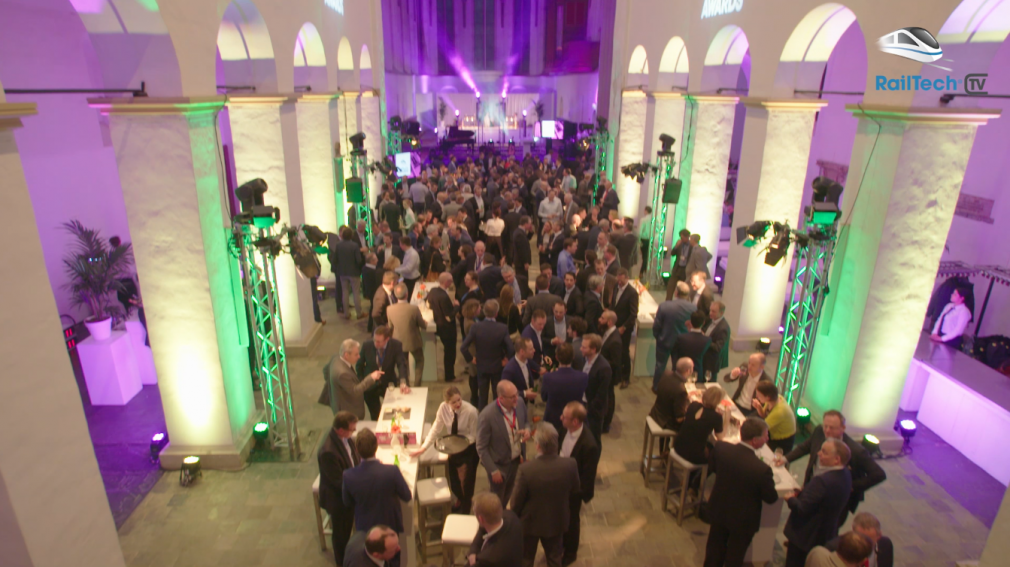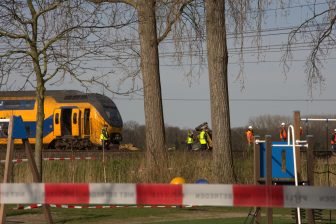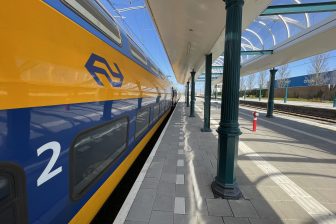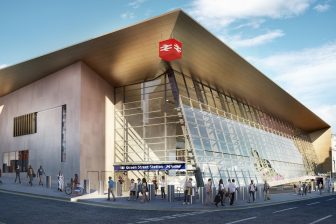
Eighteen innovations in final of RailTech Innovation Awards
The jury has made its verdict: from a total of 75 applications, eighteen innovative products and services have made it through to the final round. At the end of the first day of RailTech Europe 2019, on 26 March, the winners of all six award categories will be announced. The public can still vote for the Public Award.
The nominees for the Innovation Awards 2019 in each category are:
Infrastructure:
University of Zagreb Faculty of Civil Engineering – RUCONBAR. RUCONBAR stands for ‘RUbberized COncrete Noise BARriers’. This is an environmentally friendly noise barrier made of a mixture of concrete and ground-up car tyres. One kilometre of Ruconbar (which is three metres high) contains 7,800 recycled tyres.
Thales – TIRIS (Thales Big Data Analytics platform for the rail sector) Via this digital platform, data from a very wide variety of sources can be combined and analysed. This allows Thales to offer a broad range of services from advice to predictive maintenance.
Infrabel – Hyperion. This is a fully automated signal recognition system developed by Belgian railway infrastructure manager Infrabel, used for ERTMS projects. Hyperion, which requires four cameras and multiple laser scanners, is seen as a game changer as Infrabel not only uses it for predictive maintenance but also to develop and install ETCS software across its whole network.
Rolling stock:
Rail Service Net – Mobile sand dispenser. With this piece of equipment, locomotives that have got stuck between services as they have run out of sand can quickly and easily be got going again, without electricity or compressed air from the locomotive itself. Instead of requiring six to eight hours per ton to lay sandbags manually, the sand dispenser can dispense one ton in two hours, regardless of where the locomotive is.
Nijhuis Engineering Dronten B.V. – BEAR rail system. This is a new machine for laying the track. More details about this machine will follow once the patent has been granted, which is expected to happen in the second half of March.
Global Railway Engineering Pty Ltd – Scheffel Self Steering. This three-part self-steering bogie is suitable for all rail systems that work with three-part bogies. According to the manufacturer, it delivers 5-10 times less wear and tear on the wheels in general, and up to 40 times less in bends. Furthermore, fuel is saved and there is a lower chance of derailment.
IT Innovation:
ESIM – Unmanned diagnosis system for the geometry of the track. This system carries out the same periodic checks of the track as a measuring train but from a normal passenger or freight train. Various parameters of the track’s geometry are measured from the train using sensors.
Luleå University of Technology – The ePilot. This is a collaborative digital project for track maintenance in Sweden. ePilot brings together infrastructure owners, rail operators, contractors, maintenance companies, suppliers, consultants and the Luleå Railway Research Center (JVTC).
CP – Comboios de Portugal E.P.E. (Portuguese Railways) – migration application. The Portuguese rail operator CP, together with Fujitsu, has developed a solution to migrate from two different payment systems based on Windows CE to one new Android system.
Public transport:
Qlayers – Sharkskin microstructures. Qlayers has developed a print technique with which coatings with microstructures can be printed on trains. One of the first is based on the skin of a shark. The coating reduces air resistance and makes it easier to make it ice-free.
London North Eastern Railway – Linking sensors to seat reservations. This system couples the online reservation system for passengers to sensors above the seats. As a result, passengers know which seats are available on the train in real time, and the rail operator knows exactly where the passengers are at any time, and so can deploy its rolling stock more efficiently.
EPFL Ecole Polytechnique Fédérale de Lausanne – Researchers at this Swiss university developed energy efficient glass that allows mobile telephone signals though. Rail operator BLS is going to install this glass in its trains.
Start up:
Castlab/Melis Gieterijen Tilburg. With the help of 3D printers, this company can produce metal prototypes, parts that are no longer available and a small series of products within ten working days.
DB Coating – Permanent Protection. This is a protective coating from which graffiti can easily be cleaned with the accompanying spray. According to DB Coating, both products are environmentally friendly, primarily because they limit the number of cleaning materials that need to be used, and because the coating is long-lasting.
Miss – KONUX Predictive Maintenance System for Rail Switches. A solution that uses IIoT sensors and artificial intelligence to monitor the condition of switch components. The data is translated into advice for (predictive) maintenance.
RailFreight:
Traxens – Digital Freight Train. According to Traxens, this product and service package allows conventional freight wagons to be converted into intelligent wagons in record time. These intelligent wagons facilitate geolocation, arrival notifications, status monitoring, digital assistance with loading and unloading, wagon management and predictive maintenance.
SBB Cargo AG – 5L Next. These new rail freight wagons were developed for the Swiss railways. According to SBB, their strengths include low weight, low noise production and an optimal relationship between lifespan and cost.
RailApp – Transaction and communication platform. RailApp functions as a transaction and communication platform for rail operators who work together to share capacity. The app ensures efficient communication and includes the safety protocols of individual companies.
Public Award
All the above are also nominated for the Public Award. You can vote for this award here until Tuesday 26 March at 10.00 am.
The award winner will be announced during the Awards Ceremony on 26 March 2019 at Nicolaïkerk in Utrecht.



